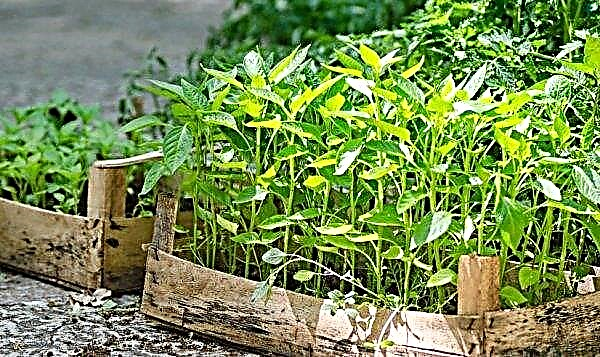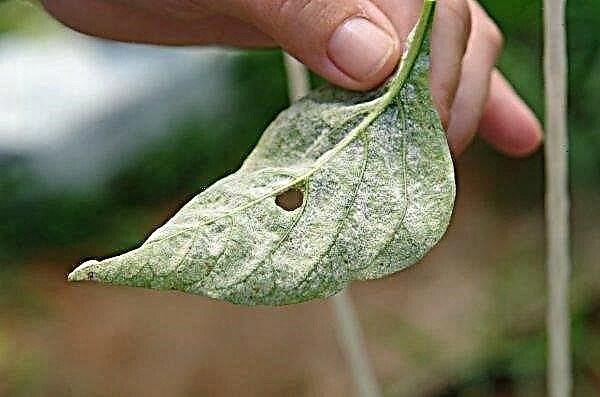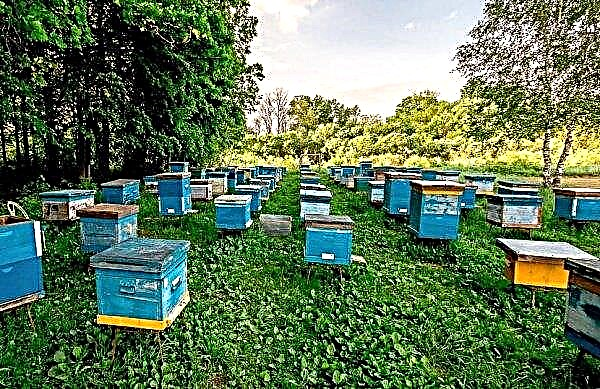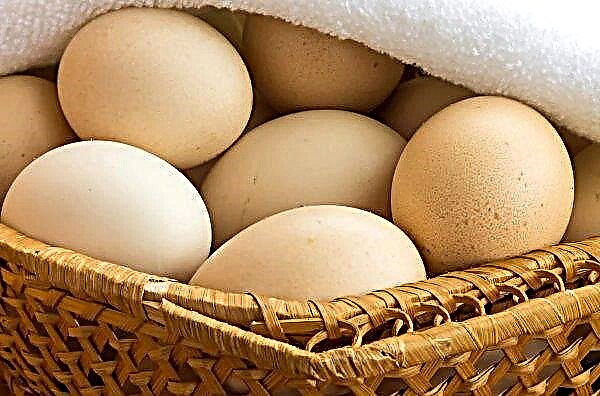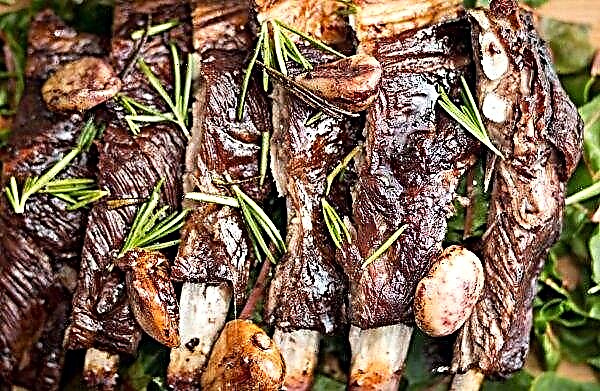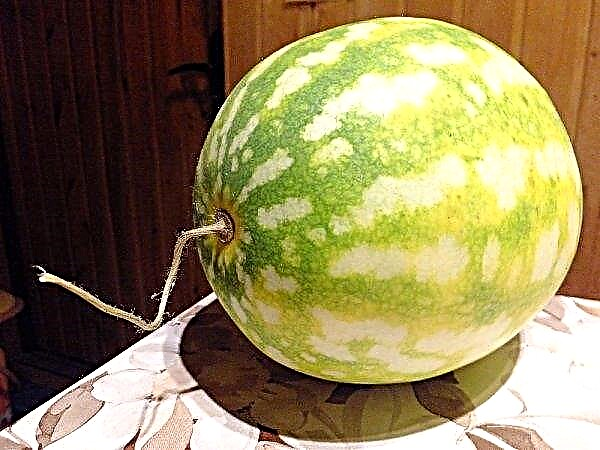The cultivation of heat-loving watermelons requires certain agrotechnical knowledge. Not only beginners, but often already experienced gardeners make mistakes in caring for the crop, which affects the quality and quantity of the crop. In order for the berry to be quite large and sweet, it is necessary to properly care for the bush in the early stages of its growth. How best and correctly to do this - we will consider further.
Why do I need to pinch watermelons
It is difficult to grow a juicy and sweet fruit without pinching, and in some regions it is impossible. Pinching is necessary to stop the development of growth points of excess shoots and reduce the growth of the total plant mass. The number of berries on the bush is also limited, which allows stored fruits to ripen faster.
Which grades require pinching
How to pinch watermelons exactly depends on the chosen variety and climatic conditions. Such manipulations in the southern latitudes are less frequent, but in cold areas where there are few sunny days, almost all varieties are nipped.
Did you know? In addition to large and familiar to all watermelons, there are dwarf fruits, the taste of which can be compared with cucumbers. The length of such berries is only 3–4 cm
In the northern regions, watermelons of the following varieties are usually grown:
To grow a sweet and juicy crop, 1-2 fruits are left on one bush. In the southern representatives, pinching is carried out, leaving up to 4 berries on one bush. The most popular among watermelons with large fruits are the varieties Kholodok and Nice.Dates of the procedure
Varieties requiring a lot of sunlight and heat ripen quickly and are characterized by a sweet taste. In the regions of the northern and middle stripes of cold, they come early, so the plant needs to be helped to ripen, while the days are still warm. For the pinching procedure, it is necessary to determine the most suitable time. As practice shows, pinching in the wrong period can spoil the entire yield.
Important! Topping must be carried out on sunny warm days, so that the cropped areas quickly dried out. Pruning shoots in wet weather contributes to the formation of rot.
It is better to start pinching the excess vegetation when the seedlings begin to obscure each other. Pruning is carried out when minor shoots are visible: this helps to prevent weakening of the plant and promotes the growth of watermelons. It is also recommended to remove shoots above the berry itself so that the fetus receives more sunlight.
Rules for the pinching procedure
There are several technologies for cutting watermelon plants. Methods differ depending on the variety, growing conditions and climatic component.
The stalk
When trimming the stem, it is worth remembering several rules clearly:
- Only stepsons can be removed. The main stem cannot be damaged.
- On one stalk no more than two shoots should remain.
- One bush after pruning should have at least two and no more than six ovaries (the exact amount depends on the plant variety). The ovaries need to be removed in the first stages of their formation.
- Shoots, which have five or more leaves, are cut off after the second leaf. Here you need to monitor the emergence of new sprouts and immediately remove them.
- If the shoot is infertile, pinch it completely.
- After the formation of the first ovaries on the shoot, the upper sections are cut off, leaving only a few leaves.
- During berry growth, pinching is not carried out.
If after pinching a few leaves on the plant, the shoot above the berry is cut off. This ensures the growth of new sheets. Lateral branches without ovary are removed on the root neck to allow further formation of the fetus and its good ripening.
Did you know? The largest berry with the taste of watermelon - a watermelon - was brought out by Ukrainian scientists, crossing a watermelon (in Ukrainian, “kavun”) and pumpkin (in Ukrainian, “watermelon”). The weight of such a fruit with good care can reach 65 kg, but even if the plant was not cared for enough, its average weight can be 15 kg.
Tops at the stem
Extra processes at the top of the stem are removed with scissors. The created branching of the plant has a good effect on the crop. The optimal number of leaves will provide good nutrition to the bush and prevent it from drying out. Instructions for trimming the top of the stem:
Instructions for trimming the top of the stem:
- As the watermelon grows, lashes form.
- During pinching, the side shoots are removed, without affecting the main stem. At this stage, such manipulation will improve the growth and development of the stem for the appearance of the first ovaries.
- After pollination and the growth of ovaries, sterile and weak shoots are cut off.
- On fruitful shoots, only the tops are removed.
Watermelon ovaries
You can pinch watermelon ovaries using one of three methods:
- The first is carried out in the presence of side shoots. All fruitless shoots are removed, leaving 3–6 ovaries on the main one. Only 3-4 leaves are left for unnecessary shoots, which take part in the nutrition of the main stem. As the berries grow, the lower shoots are gradually removed. This method is suitable for all varieties of watermelon.
- The second method involves cutting side shoots. Every 4-5 sheets, the ovary is saved. In this case, you should inspect the bushes once a week and remove new shoots.
- The third method is the most popular among gardeners. At the main shoot, the side lashes do not touch. On the side shoots, fruit sets, and on the main shoot all the shoots are cut. After the first ovary appears, no more than 6 fruits can be left on one bush. It is permissible for each lash to have no more than 2 berries. Tops pinch to the third sheet. All excess processes are cut off.
Thanks to the third pinching method, the branches of the plant become more developed, and the yield is rich. The optimal number of leaves allows the bush to eat well and prevents it from drying out.
Outdoor watermelon formation
On open ground there is no need to tie up bushes, so they are often grown in spread. It is not easy to control how and where new flowers appeared, since the branches of the bush are intertwined. For beginners, the question often arises: whether to pinch the main stem of a watermelon grown in open ground.
Experienced gardeners recommend doing this in the initial stages of stem growth to prevent strong bush growth. The formation of watermelon in the open field is carried out after the growth of the ovaries, as well as when fruits appeared on the shoots of the third order.
After the ovaries grow up
This method is used for further free growth of the plant. Pinch shoots only in the upper part, so that they are within the formed fruit. Formation is carried out only after the formation of 2-3 berries, the diameter of which is not less than 5 cm. The sterile shoots are removed. The remains of the branches are not cleaned so as not to harm healthy lashes.
With fruiting on third-order shoots
This method is most suitable for watermelons, which are grown in latitudes with a cold climate. Pinching is carried out after the formation of the fifth leaf on seedlings. When second-order stems appear, they are cut off over the fifth leaf. Next, fruitful shoots of the third order will begin to grow. 3-4 berries are left on each watermelon bush, the rest are cut.
Follow-up care
After pinching, plants need special care, which will affect good yield. Fruits should be periodically inspected and monitored so that they do not come into contact with the soil. To do this, the soil is covered with a thin layer of straw, which will prevent unwanted contact and protect the fruits from decay.
Important! Watering during the ripening of berries must be stopped. Otherwise, fetal development is inhibited.
The soil where watermelons grow needs to be fed regularly. Usually, liquid mullein, litter and other types of organic fertilizers are added to the ground. For a good harvest and accelerated fruit ripening, superphosphate with potassium is added to the soil. In dry periods, watering is recommended 2 times a week. This will prevent quick drying of the soil.
Additional growing recommendations
Pinching procedures are very important for good fruit development. But in order to get a good harvest, watermelons, like other plants, should create the most favorable conditions and timely care:
- Watermelons are heat-loving crops that require a lot of light and heat. Seeds germinate at a temperature not lower than + 15 ° С (in a colder environment they rot in the soil), and if after germination the temperature is less than + 20 ° С, the plant growth will be slowed down. That is why it is important to choose the right melon variety, so that the fruiting is not very early or too late.
- Although watermelons are drought tolerant plants due to a well-developed root system, they do not tolerate shading. The culture feels good in sandy loam soils that are warm enough and protected from strong winds. Unsuitable are soils with a high level of moisture and a heavy chemical composition. Optimal will be a neutral or alkaline soil composition. In an acidic environment, the fruits are small and crack not yet ripened.
- Every year, it is advisable to change the place of planting to preserve nutrients in the soil. Usually, after a watermelon, farmers recommend planting wheat or corn.
- Harvesting begins when the berries are fully ripe. The main signs of watermelon maturity include a dry tail and a characteristic sound when tapping a watermelon.
The pattern of pinching gourds is simple, and subject to the conditions of pruning, you can significantly increase the yield. The main thing: to comply with generally accepted rules and to prevent arbitrary plant growth.

